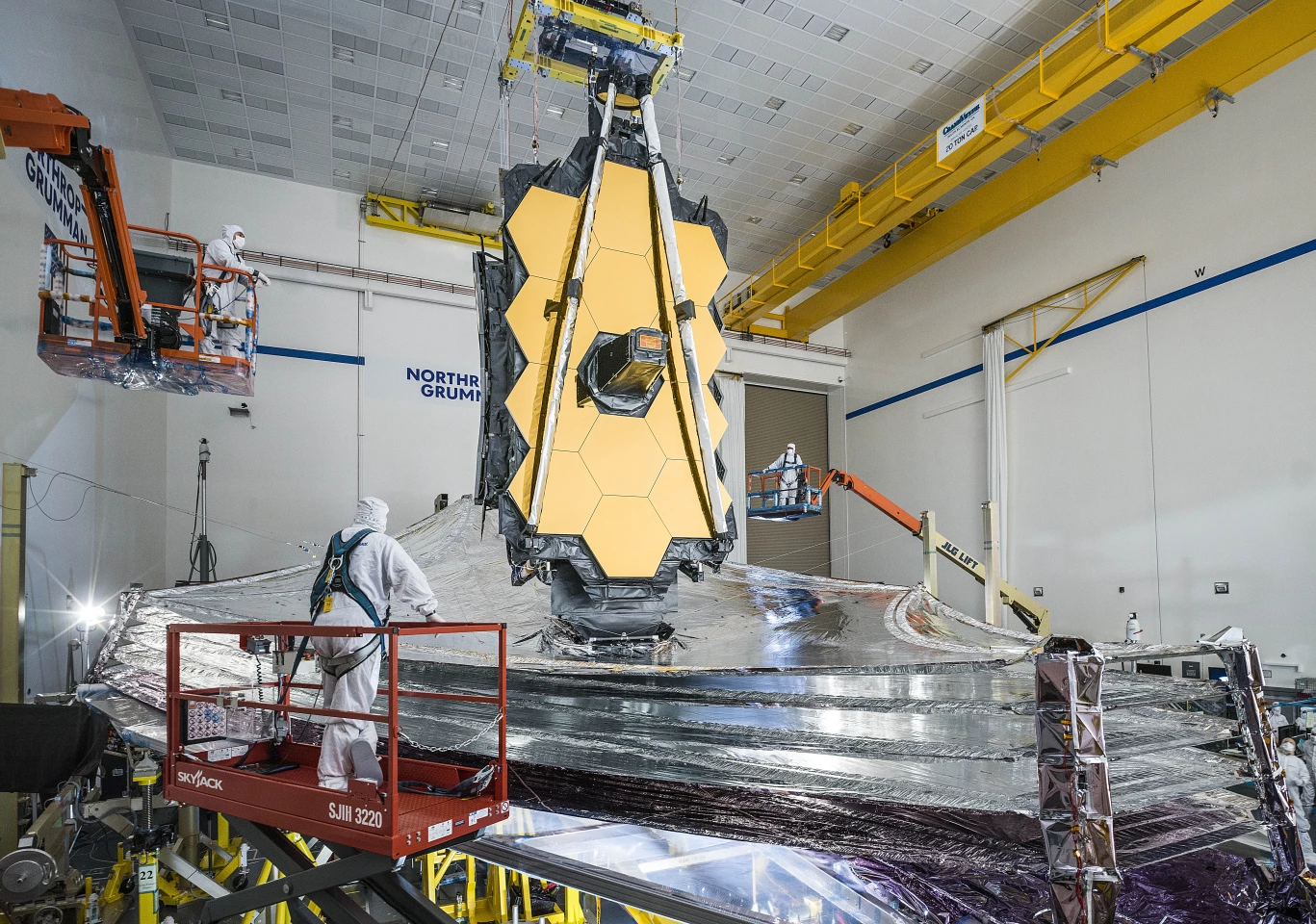A next-generation space observatory has inched closer to lift-off, with NASA unfolding the James Webb Space Telescope’s five-layer sunshield in the same way it expects it to after arriving in orbit. The tests demonstrated how the giant apparatus can unfurl much like a “choreographed dance,” with the milestone dress rehearsal described as one of the program's biggest accomplishments of the year.
The James Webb Space Telescope is around two decades in the making, and will become the largest, most powerful and complex orbital observatory ever launched into space. Once there, it will study the secrets of the early universe, probe the makeup of distant exoplanets and investigate supermassive black holes, using a light-collecting capacity seven times that of Hubble to take our space exploration efforts to new heights.
A key part of this massive instrument is the sunshield, which will effectively split the observatory into two halves, a sun-facing side with a temperature of around 185 °F (85 °C) and a relatively chilly side with temperatures of around -388 °F (-233 °C). This is where the telescope's optics and science instruments will live, as they are designed to operate at extremely cold temperatures.

But the sunshield cannot be launched into space in this configuration. Instead it will be folded up like origami and packed into an Ariane 5 launch vehicle, which will carry it to orbit. From there, two pallet structures fold down, followed by a pair of huge arms that pull out a set of five membranes, which then need to be individually tensioned as they settle into their fully deployed form.
This is handled by a grand total of 139 actuators, eight motors and thousands of other components, which respond to commands sent by the mission’s engineers. The team was able to carry out this procedure as planned at the Goddard Space Flight Center, moving the observatory that little bit closer to take off, which is expected to take place some time next year.
“This is one of Webb’s biggest accomplishments in 2020,” said Alphonso Stewart, Webb deployment systems lead for NASA’s Goddard Space Flight Center. “We were able to precisely synchronize the unfolding motion in a very slow and controlled fashion and maintain its critical kite-like shape, signifying it is ready to perform these actions in space.”
Source: NASA





